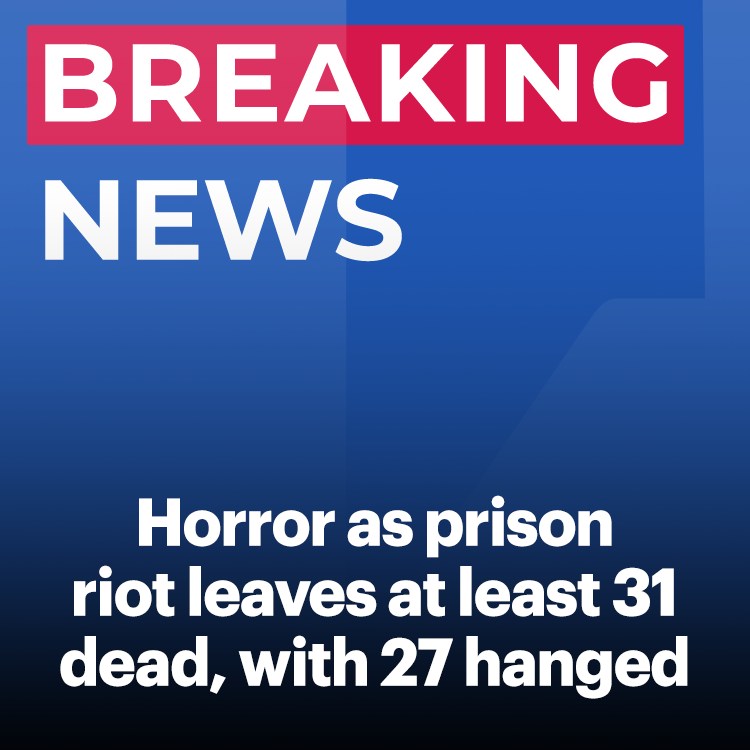A day of violent, armed rioting inside a prison in southwest Ecuador erupted into one of the deadliest episodes the country has seen this year, leaving at least 31 inmates dead, according to Ecuador’s national prisons agency, SNAI.
In an overnight statement shared on X, SNAI reported that 27 prisoners in the coastal city of Machala died from asphyxiation and “immediate death by hanging.” Officials offered no further details about the exact circumstances and said forensic teams were on-site to confirm the causes of death.
Authorities emphasized that they were still working to “fully clarify the facts,” as investigators combed through a disturbing and chaotic scene.
Hours of terror behind prison walls
The riot broke out around 3:00 a.m. local time, with residents near the facility recalling the terrifying sounds of gunfire, explosions, and screams for help echoing from inside.
Elite tactical police units entered the compound shortly after the violence erupted and eventually restored control. Earlier in the day, SNAI confirmed that four people had been killed during the initial outbreak of violence. By afternoon, the death toll had skyrocketed as officials uncovered more victims.
In total, 33 inmates and one police officer were reported injured.
Authorities did not confirm whether the incident involved rival gang factions, but the prison had recently undergone a reorganizing process—often a trigger for turf clashes within Ecuador’s volatile penitentiary system.
A prison system ruled by gangs
Ecuador’s prisons have increasingly become command centers for the country’s most dangerous drug-trafficking organizations. More than 500 inmates have been killed since 2021 in brutal confrontations between gangs battling for control of drug routes and lucrative prison territories.
A 2024 Insight Crime report called Ecuador’s penitentiary network the “epicenter of organized crime” in the country.
President Daniel Noboa’s administration, promising a hardline approach to security, has repeatedly blamed the ongoing bloodshed on gang wars spilling into prisons.
A pattern of escalating brutality
The Machala prison has been the site of repeated violence. In September, gang fighting inside the same facility left 14 prisoners dead and 14 wounded. In that riot, inmates used guns and explosives, and several escaped before later being recaptured.
Just days later, 17 more prisoners were killed in a riot in the northern city of Esmeraldas. Graphic images from that incident — verified by AFP — showed bodies strewn across cell blocks, two of them decapitated, underscoring the extreme brutality that has become common in Ecuador’s prisons.
Distraught family members frequently gather outside facilities during outbreaks, desperate for information. One woman told AFP she rushed to the prison after neighbors reported hearing gunfire and screams at dawn. Soldiers directed her to the morgue to check for loved ones — a chilling ritual now familiar to many Ecuadorian families.
A nation overwhelmed by narco-violence
Ecuador, once considered relatively safe, has been engulfed by drug-fueled violence. Positioned between Peru and Colombia — the world’s largest cocaine producers — the country has become a major trafficking hub. Government data shows over 70% of global cocaine shipments now pass through its ports.
In recent years, the violence has escalated sharply, with prison massacres, bombings, political assassinations, and armed attacks becoming alarmingly frequent.
According to Insight Crime, the roots of Ecuador’s crisis “can be traced directly to the country’s prison system and the criminal networks that have evolved inside of it.”
As the investigation into Sunday’s massacre continues, Ecuador faces a grim reality: its prisons — once institutions of containment — have become battlefields in a broader war consuming the nation.


